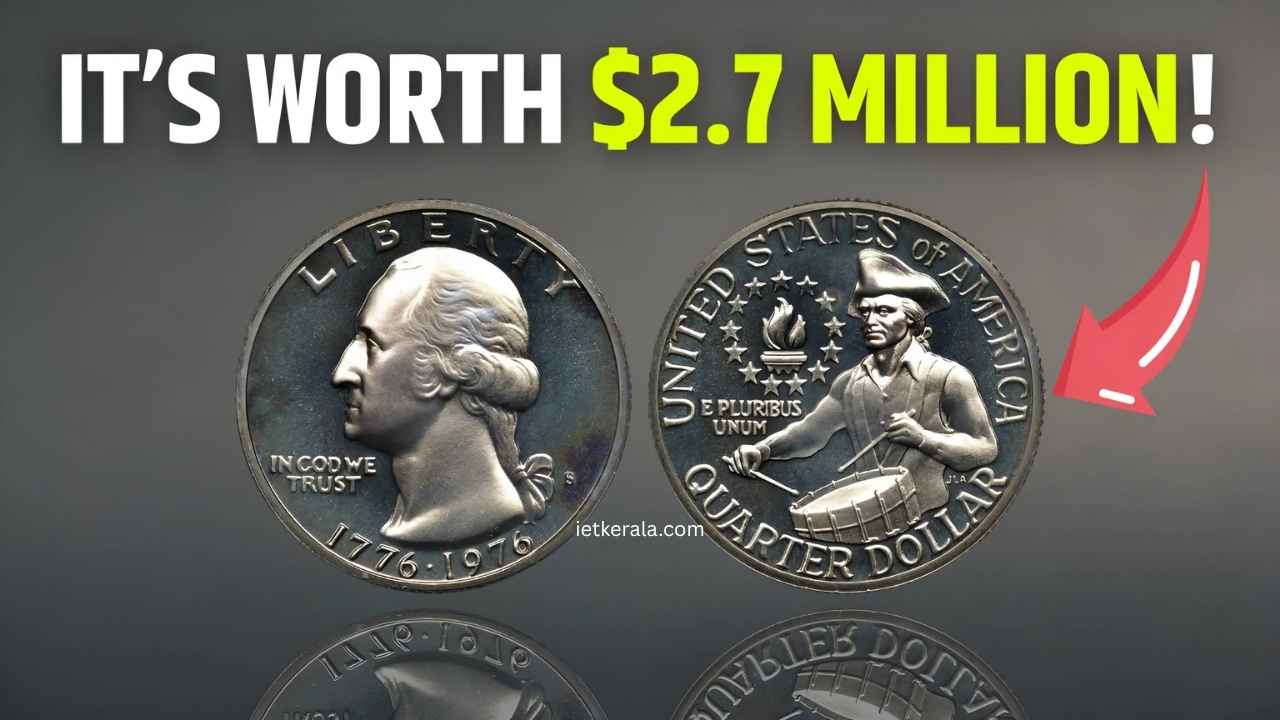1976 Quarter: What if a simple coin sitting in your old desk drawer turned out to be worth millions? That’s exactly what happened when a rare 1976 quarter was auctioned for an astonishing $2.7 million. This coin, from the U.S. Bicentennial series, had a distinctive minting flaw that made it an incredible find. Let’s take a closer look at what made this quarter so valuable and how you might have a hidden gem of your own.
Why This 1976 Quarter Was So Valuable
The 1976 quarter was released to mark the 200th anniversary of American independence and features a colonial drummer on its reverse side. While most Bicentennial quarters are only worth face value, this one had a rare “double die” error, where the coin design is stamped twice slightly off-position. This causes visible doubling in elements like the word “Liberty” and the date. Experts say only a handful of these error coins exist, and their scarcity is what drives their incredible value.
Spotting a Rare 1976 Quarter
You don’t need advanced equipment to identify a potentially valuable quarter. A simple magnifying glass and a bit of patience could be enough. Here’s what to check for:
- Doubled Lettering: Look closely at “Liberty” or “In God We Trust” for any signs of blurriness or overlap.
- Date Doubling: Examine the numbers in 1976, if they appear shadowed or layered, it could be a double die.
- Mint Mark: Near the date, look for a tiny letter (like “D” for Denver); certain mints had higher error rates.
- Coin Condition: The better preserved your coin is, the more it might be worth.
- Sharpness of Design: Make sure the colonial drummer and other design details are crisp and clear.
If your coin meets these traits, it’s wise to have it evaluated by a professional coin grading service.
Record-Breaking Coin Sales
Coins with minting errors can fetch huge amounts at auctions. The following examples show how high collectors are willing to go for rare finds:
| Error Type | Sold For | Year |
| Double Die | $2,700,000 | 1976 |
| Off-Center Strike | $900,000 | 1975 |
| Wrong Metal Used | $1,200,000 | 1969 |
These auction results prove the incredible demand for error coins, especially those linked to major events like the Bicentennial.
What Makes Bicentennial Quarters Special
Quarters from 1976 hold a special place in U.S. coin history. Created only for that single year, they commemorate two centuries of independence. While millions were minted and most are still only worth 25 cents, errors like the double die are extremely rare. Interestingly, the $2.7 million coin wasn’t made of silver, it was the standard copper-nickel version, proving that even ordinary materials can hold extraordinary value if the right flaw is present.
Found a Suspiciously Rare Coin? Here’s What to Do
If you stumble upon a 1976 quarter that seems unusual, don’t rush to clean it, doing so can reduce its value. Instead, place it in a protective coin holder and get it reviewed by a reliable dealer or grading company. Online numismatic communities and databases can also help you compare features. Though most of these quarters remain at face value, the right error could change your financial future.
Quick Tips for Aspiring Coin Collectors
If you want to start searching your change for valuable coins, keep these quick tips in mind:
| Tip | What to Know |
| Use a Magnifier | Helps you spot fine details like doubled text or dates. |
| Store with Care | Use holders or sleeves to avoid wear and tear. |
| Study Coin Errors | Learn about double dies, off-center strikes, and more. |
So, next time you clean out an old drawer or check your spare change, take a closer look. A simple 25-cent coin could turn out to be a life-changing discovery.




